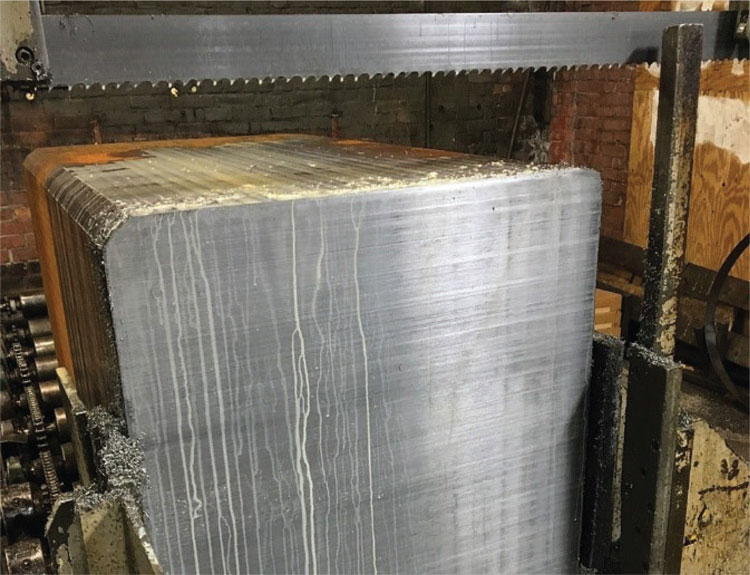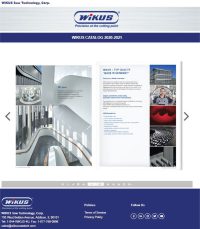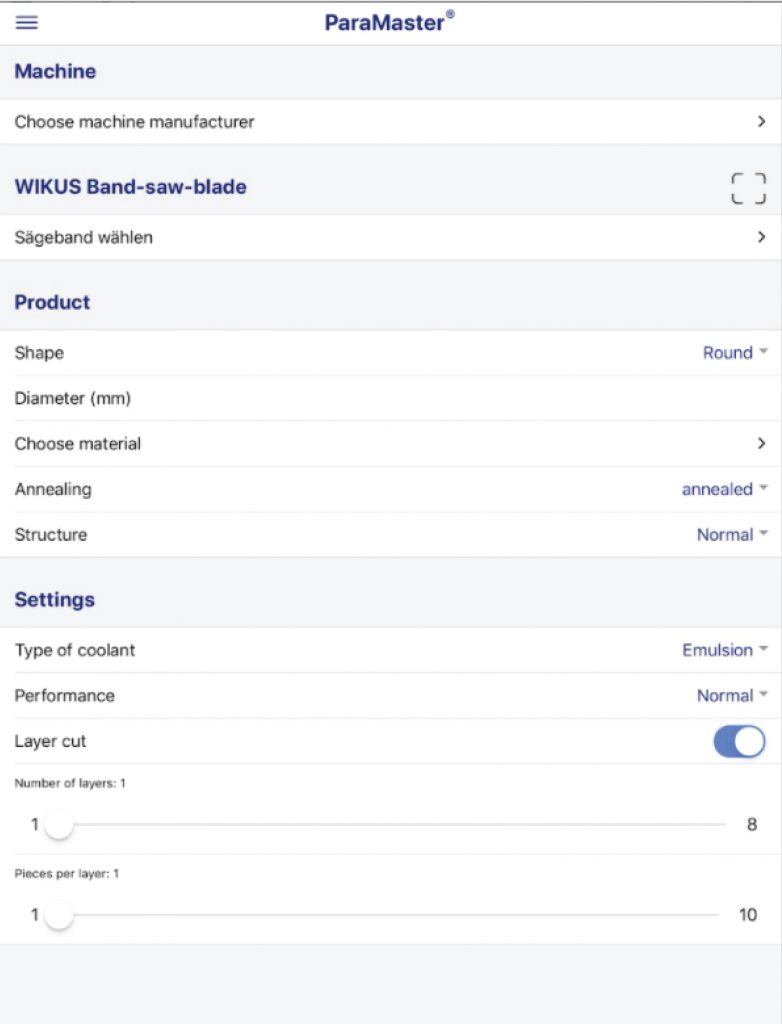The right blade coupled with correct sawing parameters results in additional productivity
Everyone’s cutting challenges differ, so understanding available blade options is important when selecting the blade best suited for an individual application. Many saws are tasked with cutting more than one type of material in a variety of sizes and shapes, so WIKUS technicians typically use the 80/20 rule when recommending blades. Analyze what you’re cutting and choose the blade that will cover 80 percent of your applications. Although the choice may not be the perfect one for your remaining 20 percent, with proper feed and speed adjustments, the blade usually will perform sufficiently in those applications, too.
WIKUS offers a wide range of both carbide and bimetal band saw blades, which provide various levels of performance. Once the right blade is implemented, the benefits could include straighter cuts, smoother surface finish, increased blade life and less time spent making each cut. Another benefit is the reduced cost per cut and fewer out-of-tolerance cuts being made.
Increasing Output
When cutting large blocks of dense material, reducing the cut time is a big factor. In this type of application, blades must deliver high performance while maintaining durability. It all boils down to removing chips more aggressively and preserving a consistent chip load throughout the cut.
Recently, WIKUS was able to help a customer increase its output cutting 26-inch by 26-inch blocks of 4340M aircraft-quality alloy steel on a Behringer HBP800. In this scenario, the ideal blade would have had a coarser tooth pitch; however, we selected a Skalar M42 blade with 1.4/1.8 teeth per inch based on the 80/20 rule of the customer’s material sizes and adjusted the recommended running parameters accordingly.
 The Skalar M42 blade has a progressive tooth set, which allows the kerf to be produced by generating five chips, versus three chips with conventionally set blades. This gives each tooth the ability to take a thicker chip, which results in faster cutting. Pulling the chips across 26 inches of material increases the need for ample gullet capacity to evacuate the chips being produced.
The Skalar M42 blade has a progressive tooth set, which allows the kerf to be produced by generating five chips, versus three chips with conventionally set blades. This gives each tooth the ability to take a thicker chip, which results in faster cutting. Pulling the chips across 26 inches of material increases the need for ample gullet capacity to evacuate the chips being produced.
Using our ParaMaster 4.0 app, we dialed in the recommended blade speed for the 4340M material to 95 surface feet per minute, adjusted the coolant flow and set our descent rate at 0.280 inches per minute to achieve a cutting rate of 7.5 square inches per minute.
Not only did the chips coming off the new blade have the correct appearance but also were being produced at a much faster rate than previously seen by the customer. Within the first few minutes of our 90-minute cut, the customer had also commented on how quietly the blade cut, compared with the normal noise level they experienced.









